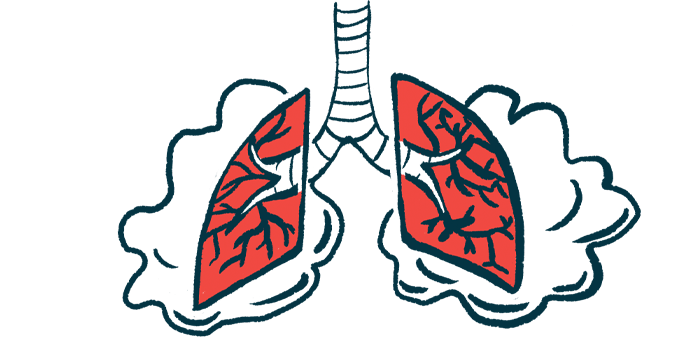Increased Mucus Protein From Viruses Linked to Exacerbations
Written by |

The levels of a mucus protein called MUC5AC — abnormally increased when a person gets a viral infection — are associated with airway inflammatory responses and exacerbation severity in people with chronic obstructive pulmonary disease (COPD), a study shows.
Simply put, the increased mucus protein from viruses creates a “vicious cycle” of inflammation that leads to worse exacerbations, according to researchers.
These findings point to MUC5AC as a potential therapeutic target to lessen exacerbations in this patient population. However, determining the “precise molecular mechanisms involved requires further investigation,” the team wrote.
“It is possible that virus-induced MUC5AC itself plays a central role in driving airway inflammation and exacerbation severity in COPD,” they wrote.
The study, “Airway mucins promote immunopathology in virus-exacerbated chronic obstructive pulmonary disease,” was published in The Journal of Clinical Investigation.
COPD is an inflammatory airway disease punctuated by acute exacerbations, or periods of sudden symptom worsening, that can last for several days and impair breathing. Such exacerbations are often triggered by rhinoviruses (RV) — the most frequent cause of the common cold.
While the mucus that covers the surface of the respiratory tract acts as a first line of defense against infection, excess production of MUC5AC and MUC5B — two major mucus proteins, or mucins — is a major feature in COPD and other inflammatory lung diseases.
In addition, studies have shown that COPD patients who experience frequent exacerbations have higher mucin levels, and that MUC5AC levels are associated with lung function decline in these individuals.
However, “the complexity of interactions between mucins and pathogens [disease-causing microbes], and how the perturbations in mucin expression that occur in COPD affect susceptibility to infection and subsequent exacerbations, are poorly understood,” the researchers wrote.
“Nor is it known whether inhibition of mucus production would be beneficial or harmful in the context of exacerbations,” they added.
To learn more, an international team of researchers now set out to assess the role of abnormal mucin secretion in COPD exacerbations by analyzing lung mucus samples from COPD patients and healthy people, mouse models, and lab-grown human lung cells.
They first found the levels of MUC5AC were significantly increased in COPD patients during spontaneous and RV-induced exacerbations — and particularly among those with frequent exacerbations.
Notably, rhinovirus-infected COPD patients showed a significant increase in MUC5AC levels at day 3 post-infection (before peak airway inflammation), which remained significantly higher than those in RV-infected healthy people, who showed no MUC5AC increase.
While similar trends were observed for MUC5B, these did not reach statistical significance, pointing to MUC5AC as a more sensitive biomarker to track COPD exacerbations.
Further analyses showed that higher MUC5AC levels in infected COPD patients were significantly associated with those of pro-inflammatory cells and molecules, as well as greater viral and bacterial loads — factors known to influence COPD exacerbation severity.
Consistent with these findings, higher MUC5AC mucus protein levels also were significantly linked to more severe symptoms and greater lung function decline.
Additional work in mice and lab-grown human airway cells showed that MUC5AC had an active role in inflammation, as genetic suppression of this mucin lessened RV-induced airway inflammation, while MUC5AC administration had the opposite effect.
Notably, MUC5AC’s pro-inflammatory effects were found to be likely associated with increased release of adenosine triphosphate (ATP), a molecule normally used as a source of cellular energy, but that when found outside cells is recognized as a danger signal, promoting inflammation.
Given that RVs are known to promote MUC5AC production through a type of receptor protein called epidermal growth factor receptor (EGFR), the team analyzed the effects of treating a COPD exacerbation mouse model with an EGFR blocker.
Results showed that suppressing EGFR not only reduced MUC5AC levels, but also lessened airway inflammation, the levels of ATP outside cells, and bacterial load.
Importantly, this approach did not affect anti-viral responses, “indicating that therapies aimed at inhibiting MUC5AC production would not be expected to adversely affect anti-viral host-defense,” the researchers wrote.
These findings highlight a pro-inflammatory role for MUC5AC during viral infection that may involve the release of ATP and increase the severity of COPD exacerbations.
Notably, previous evidence suggested that this mucin also contributes to a thicker mucus, which when combined with ongoing inflammation in the airways, as in COPD, may worsen the disease by clogging airways.
Also, COPD patients with frequent exacerbations “may have exaggerated mucin production at baseline [at steady state] and in response to infection,” the team wrote.
“Mucin-induced airway inflammation might trigger further production of mucins, leading to a vicious cycle which contributes to enhanced airway inflammation and mucus [overproduction] to drive exacerbation severity in COPD,” they wrote.
The results also suggest that “early targeting of mucins, and perhaps early inflammation, during rhinovirus infection might beneficially interrupt these cycles,” the researchers wrote.
“Future development or repurposing of therapies that specifically target mucin [production], and perhaps MUC5AC specifically, could lead to improved clinical outcomes,” they wrote.







